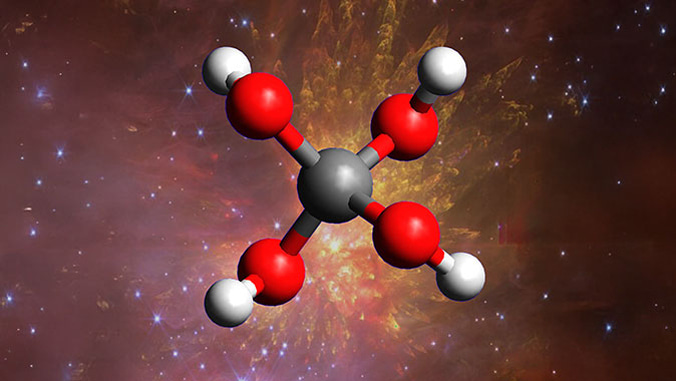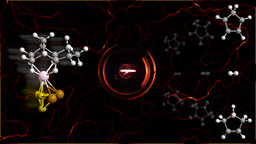Galactic Cosmic Ray Triggered Synthesis of the Superalcohol Methanetetrol C(OH)4
Published in Chemistry

Since Emil Erlenmeyer stated that organic compounds carrying more than one hydroxyl (−OH) group on the same carbon atom are not stable and eliminate water, the synthesis of geminal diols (R2C(OH)2), orthocarboxylic acids (RC(OH)3), and orthocarbonic acid (methanetetrol; C(OH)4) carrying multiple hydroxyl groups at the same carbon atom has challenged the synthetic, theoretical, and physical organic chemistry communities. Although methanetetrol is thermodynamically unstable considering the greater binding energy of a carbon−oxygen double bond relative to two carbon−oxygen single bonds along with the steric repulsion of the hydroxyl groups, for isolated gas phase molecules, a significant barrier of 156 kJmol-1 separates methanetetrol from the decomposition products carbonic acid (H2CO3) and water (H2O). Therefore, if methanetetrol can be prepared in the gas phase under ultra-high vacuum conditions, methanetetrol is kinetically stable and hence detectable.
Here, laboratory-made model ices mimicking the composition of astrophysical ices under conditions simulating those found in dense interstellar molecular clouds with low temperature (5–10 K) and low pressure, produce methanetetrol under exposure to high-energy electrons representing secondary electrons produced by galactic cosmic rays penetrating these ices. State-of-the-art electronic structure calculations support the experimental observations exploiting powerful vacuum ultraviolet light from a synchrotron.
The detection of methanetetrol – the only alcohol which can carry four hydroxyl group at a single carbon atom - in space-simulation experiments demonstrates that the interstellar medium is host to an unanticipated, counterintuitive chemistry leading to ‘unstable’ molecules not synthesizable by classical preparative methods.
For more details on the experiments and results, please refer to our paper published in Nature Communications: https://doi.org/10.1038/s41467-025-61561-z
Follow the Topic
-
Nature Communications

An open access, multidisciplinary journal dedicated to publishing high-quality research in all areas of the biological, health, physical, chemical and Earth sciences.
Related Collections
With Collections, you can get published faster and increase your visibility.
Clinical trials 2025
Publishing Model: Open Access
Deadline: Dec 31, 2025
Women's Health
Publishing Model: Hybrid
Deadline: Ongoing





Please sign in or register for FREE
If you are a registered user on Research Communities by Springer Nature, please sign in